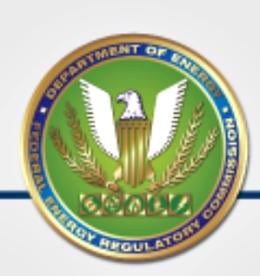On Friday, August 7, 2020, Federal Energy Regulatory Commission (“FERC”) Staff sent a report to Congress examining the “barriers and opportunities for high voltage transmission.” FERC Staff prepared this report in accordance with the Congressional directive contained in the 2020 Further Consolidated Appropriations Act. 2020, Pub. L. No. 116-94 (Dec. 20, 2019). The report reviews the relevant studies, analyses, FERC orders and polices, and other regulations that have an effect on the construction and development of high voltage transmission lines in the U.S.[1] The primary thesis of the report is that high voltage transmission can improve the reliability and resilience of the transmission system by allowing utilities to share generating resources, enhance the stability of the existing transmission system, aid with restoration and recovery after an event, and improve frequency response and ancillary services throughout the existing system. But a complicated mosaic of mostly state and some federal regulations currently delay high voltage transmission project development, sometimes for up to a decade or longer.
The report finds that the development of high voltage transmission assists in improving the reliability and resilience of the grid by providing greater access to electricity produced in other regions and, thus, make the transmission system less susceptible to negative consequences stemming from an adverse regional event. Whether it is a weather event that brings down grid infrastructure or a frequency drop during a period of high demand, improved access to interregional electricity that comes with the development of high voltage transmission projects protects the grid from the harmful effects of a strictly local event.
Such benefits of high voltage transmission translate into significant opportunities for developers as well as for state policymakers looking for ways to reduce greenhouse gas emissions and comply with renewable portfolio standards. The report outlines billions of dollars of potential upgrades each year that could move energy between regions and improve the reliability of the grid. However, the report concludes that federal, state and local permitting regimes impose significant hurdles on developers looking to bring projects online in a timely manner. The report also notes that several entities have pointed out that FERC’s landmark order attempting to address barriers to high voltage transmission development – Order No. 1000 – has in many instances been limited in its effectiveness in part because much transmission development has continued to occur outside of the Order No. 1000 process.
The report concludes that significant barriers continue to limit the ability of developers to build high voltage transmission, which in turn impedes the grid from realizing its many potential benefits. The report does not make any specific recommendations for government action to address these barriers.
[1] The report defines “high voltage” as AC transmission lines greater than or equal to 345 kV and DC transmission lines greater than or equal to 100 kV.




 i
i


